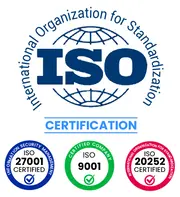Certified Global Research Member


Key Questions Answered
- Global Market Outlook
- In-depth analysis of global and regional trends
- Analyze and identify the major players in the market, their market share, key developments, etc.
- To understand the capability of the major players based on products offered, financials, and strategies.
- Identify disrupting products, companies, and trends.
- To identify opportunities in the market.
- Analyze the key challenges in the market.
- Analyze the regional penetration of players, products, and services in the market.
- Comparison of major players’ financial performance.
- Evaluate strategies adopted by major players.
- Recommendations
Why Choose Market Research Future?
- Vigorous research methodologies for specific market.
- Knowledge partners across the globe
- Large network of partner consultants.
- Ever-increasing/ Escalating data base with quarterly monitoring of various markets
- Trusted by fortune 500 companies/startups/ universities/organizations
- Large database of 5000+ markets reports.
- Effective and prompt pre- and post-sales support.
Key Emerging Trends in the Gaming Hardware Market
The gaming hardware market is witnessing several noteworthy trends that are reshaping the industry and influencing consumer choices. One prominent trend is the increasing demand for high-performance components driven by the continuous evolution of gaming technology. Graphics processing units (GPUs) are at the forefront of this trend, with gamers seeking more powerful and efficient solutions to handle graphically intensive games. This demand for enhanced performance extends beyond traditional PCs to gaming consoles and even mobile devices, reflecting a growing expectation for immersive gaming experiences across platforms. Another significant trend in the gaming hardware market is the rise of esports and competitive gaming. As esports gain mainstream popularity, there is a corresponding surge in demand for specialized gaming peripherals. Professional and amateur gamers alike seek gaming mice, keyboards, and headsets that offer precision, speed, and comfort to gain a competitive edge. This trend has led to the development of esports-focused hardware, catering to the unique needs of competitive gamers and reflecting the industry's shift toward a more professionalized landscape. Virtual reality (VR) and augmented reality (AR) gaming experiences are also influencing market trends in the gaming hardware sector. The quest for immersive gameplay has driven the development of VR headsets, motion controllers, and other peripherals that enhance the virtual gaming experience. As VR technology becomes more accessible, it is expected to contribute significantly to the growth of the gaming hardware market, offering a new dimension to gaming that goes beyond traditional screens. Cross-platform gaming is emerging as a trend that shapes the gaming hardware market. With games being played across a variety of devices, from PCs and consoles to smartphones and tablets, there is an increasing demand for versatile and cross-compatible peripherals. Gaming hardware manufacturers are responding by designing products that seamlessly integrate with multiple platforms, providing gamers with a unified and consistent experience. This trend aligns with the broader industry shift toward a more interconnected gaming ecosystem. The accessibility of gaming has become a focal point in recent market trends. Entry-level and mid-range gaming peripherals are gaining popularity, making high-quality gaming experiences more affordable for a broader audience. This democratization of gaming hardware contributes to market growth by expanding the consumer base and enticing newcomers to the gaming community. Manufacturers are recognizing the importance of catering to both hardcore enthusiasts and casual gamers, leading to a diverse range of products at various price points. Customization and personalization are key trends influencing the gaming hardware market. Gamers are increasingly seeking products that allow them to express their individuality and preferences. RGB lighting, customizable key mappings, and modular designs are becoming standard features in gaming peripherals, giving users the ability to tailor their setups according to their aesthetic and functional preferences. This trend reflects a shift from one-size-fits-all solutions to a more personalized and user-centric approach in gaming hardware design. Sustainability is emerging as a growing trend in the gaming hardware market. As environmental awareness increases, consumers are showing a preference for eco-friendly and energy-efficient gaming hardware options. Manufacturers are responding by adopting sustainable practices in production, using recyclable materials, and designing products with longevity in mind. This trend reflects a broader industry commitment to addressing environmental concerns and resonates with consumers who prioritize sustainability in their purchasing decisions.Gaming Hardware Market Highlights:
Leading companies partner with us for data-driven Insights
Kindly complete the form below to receive a free sample of this Report
Tailored for You
- Dedicated Research on any specifics segment or region.
- Focused Research on specific players in the market.
- Custom Report based only on your requirements.
- Flexibility to add or subtract any chapter in the study.
- Historic data from 2014 and forecasts outlook till 2040.
- Flexibility of providing data/insights in formats (PDF, PPT, Excel).
- Provide cross segmentation in applicable scenario/markets.









